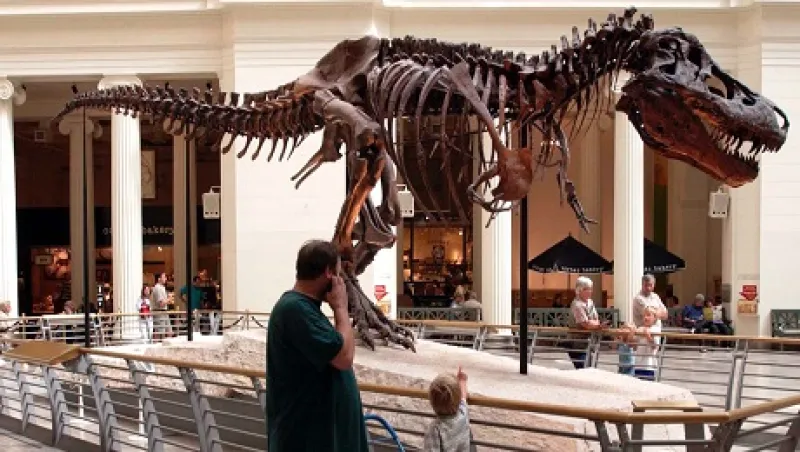
A visitor to the Field Museum in Chicago, Illinois points at "Sue," the largest and most complete Tyrannosaurus rex skeleton, on Wednesday, Sept. 4, 2002. The museum plans to sell $90 million in municipal bonds this week to pay for expansion and renovation. Photographer: Tannen Maury/Bloomberg News.
TANNEN MAURY/BLOOMBERG NEWS

